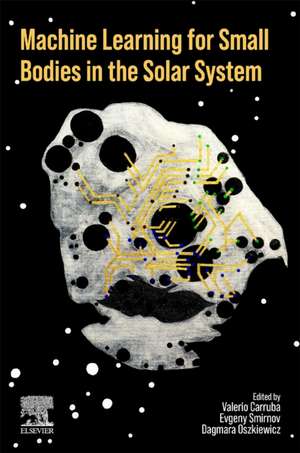Machine Learning for Small Bodies in the Solar System
Editat de Valerio Carruba, Evgeny Smirnov, Dagmara Oszkiewiczen Limba Engleză Paperback – noi 2024
- Provides a practical reference to applications of machine learning and artificial intelligence to small bodies in the Solar System
- Approaches the topic from a multidisciplinary perspective, with chapters on dynamics, physical properties and software development
- Includes code and links to publicly available repositories to allow readers practice the methodology covered
Preț: 709.74 lei
Preț vechi: 929.97 lei
-24% Nou
Puncte Express: 1065
Preț estimativ în valută:
135.83€ • 141.28$ • 112.13£
135.83€ • 141.28$ • 112.13£
Carte tipărită la comandă
Livrare economică 07-21 aprilie
Preluare comenzi: 021 569.72.76
Specificații
ISBN-13: 9780443247705
ISBN-10: 0443247706
Pagini: 328
Dimensiuni: 152 x 229 mm
Greutate: 0.45 kg
Editura: ELSEVIER SCIENCE
ISBN-10: 0443247706
Pagini: 328
Dimensiuni: 152 x 229 mm
Greutate: 0.45 kg
Editura: ELSEVIER SCIENCE
Cuprins
- Artificial intelligence and machine learning methods in celestial mechanics
- Identification of asteroid families’ members
- Asteroids inmean-motion resonances
- Asteroid families interacting with secular resonances
- Neural networks in celestial dynamics: capabilities, advantages, and challenges in orbital dynamics around asteroids
- Asteroid spectro-photometric characterization
- Machine learning-assisted dynamical classification of trans-Neptunian objects
- Identification and localization of cometary activity in Solar System objects withmachine learning
- Detectingmoving objects with machine learning
- Chaotic dynamics
- Conclusions and future developments
